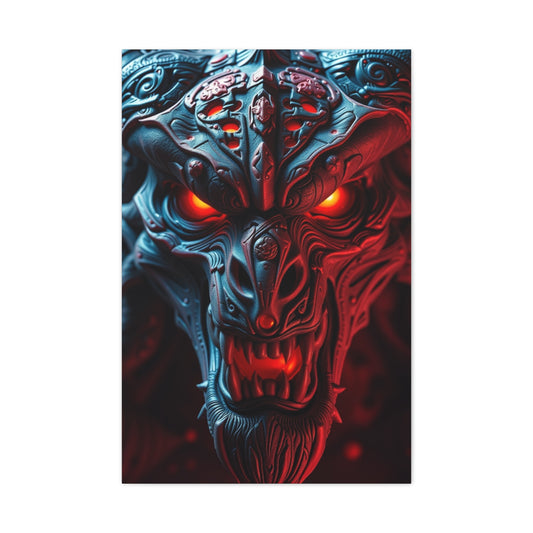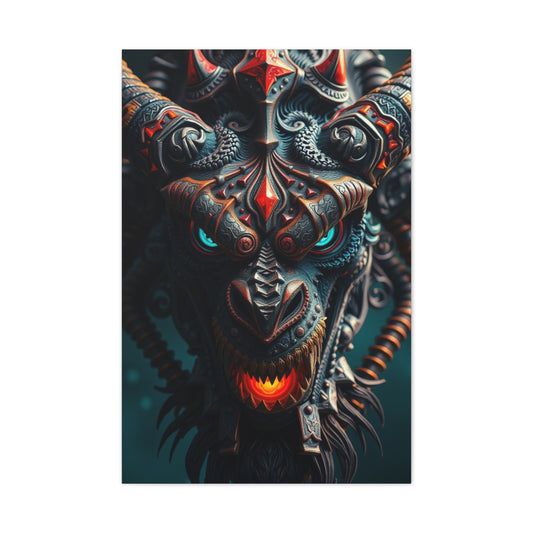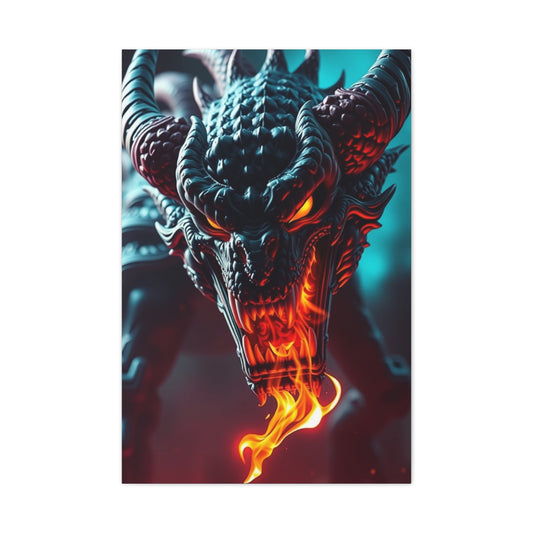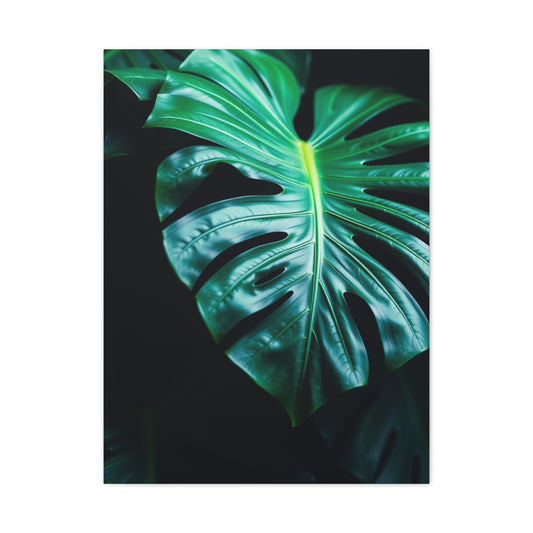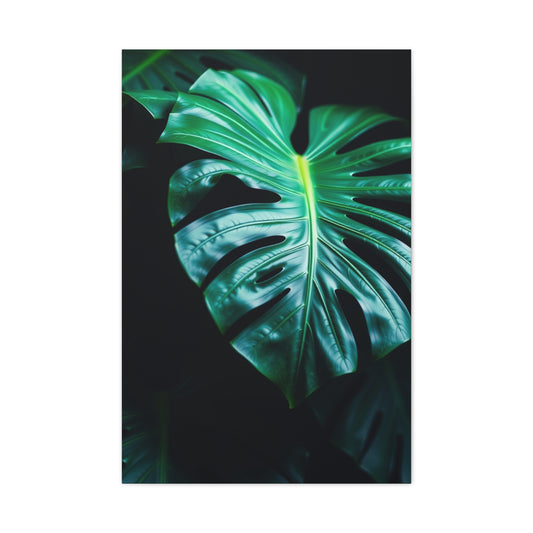The Canon EOS R5 represents a paradigmatic achievement in contemporary mirrorless camera technology, embodying a sophisticated synthesis of cutting-edge sensor engineering and computational processing prowess. Through meticulous field evaluation encompassing diverse photographic scenarios, this comprehensive documentation presents an exhaustive compilation of exemplary images accompanied by pristine unprocessed RAW files, enabling prospective users to conduct thorough assessments of the camera's imaging capabilities across multifarious conditions.
This extensive repository encompasses captures executed across a comprehensive spectrum of ISO sensitivities, ranging from the sensor's native base sensitivity through elevated performance thresholds, while simultaneously exploring various illumination paradigms that challenge different aspects of the camera's technological sophistication. Each specimen has been methodically selected to demonstrate specific performance characteristics, ensuring that potential users can evaluate the EOS R5's suitability for their particular photographic endeavors.
Comprehensive Assessment Methodology for Imaging Performance
Evaluating the performance of mirrorless cameras, particularly high-end models like the Canon EOS R5, requires more than just testing them in controlled lab settings. To truly understand a camera’s imaging capabilities, it’s crucial to assess how it performs in authentic, real-world shooting conditions. This allows for a holistic evaluation of its strengths and weaknesses in various scenarios that photographers routinely encounter. The Canon EOS R5, in particular, stands out for its ability to deliver consistent, high-quality results across a range of photographic situations.
In this methodology, the assessment process is designed to scrutinize multiple dimensions of camera performance, from dynamic range and noise control to autofocus accuracy and color reproduction. It goes beyond theoretical testing, embracing practical applications such as low-light environments, fast-moving subjects, and challenging light conditions, all of which test the true capabilities of a camera. This comprehensive evaluation is essential for photographers looking to understand how a mirrorless camera performs under different conditions and whether it suits their specific needs.
Real-World Field Conditions for Evaluating Camera Performance
Unlike controlled testing environments, which often fail to replicate the unpredictability of real-world scenarios, field testing provides invaluable insight into how a camera handles diverse photographic challenges. For instance, the Canon EOS R5 has been tested in everything from bright, sunlit landscapes to dimly lit indoor settings, offering a balanced view of its overall performance. In bright daylight, the camera’s dynamic range capabilities come to the forefront, allowing for rich, detailed captures even in high-contrast scenes. The ability to maintain highlight and shadow detail in these conditions is a testament to the EOS R5's advanced sensor and image processing power.
Conversely, when tested in low-light situations, the EOS R5's noise suppression algorithms are crucial in maintaining image clarity. The camera's ability to suppress noise in high-ISO settings allows photographers to capture clean, sharp images in dimly lit environments, a vital feature for nighttime or indoor photography. The evaluation of how well the camera handles noise at various ISO levels—whether it’s at the base ISO or pushed to higher values—helps to determine its suitability for different types of photography, including portraiture and event coverage where low-light performance is a priority.
Evaluating Across Diverse Photographic Genres
A comprehensive evaluation of camera performance must extend across a wide range of photographic genres, each with its own set of requirements and challenges. Landscape photography, for example, demands a high level of detail preservation, particularly when shooting wide vistas or scenes with intricate textures. The Canon EOS R5 excels in this regard, with its high-resolution sensor capable of capturing an extraordinary amount of fine detail and texture, even in challenging lighting situations.
Portrait photographers, on the other hand, prioritize color accuracy, skin tone reproduction, and smooth bokeh. In portraiture, the EOS R5 delivers natural, true-to-life colors and skin tones, while its advanced autofocus system ensures that subjects are captured with precision. The camera’s ability to achieve sharp focus, even in difficult lighting, makes it an excellent choice for portrait photography.
Architectural photographers need their equipment to deliver exceptional geometric accuracy and minimal distortion. The EOS R5’s high-quality lens lineup and advanced sensor design help reduce issues like barrel distortion, ensuring that straight lines remain straight, even in wide-angle shots. This makes it a reliable choice for architectural work, where precision is paramount.
Wildlife photographers often rely on fast autofocus and telephoto performance, as capturing fast-moving animals in their natural habitat can be a challenge. The Canon EOS R5, with its advanced autofocus system and impressive tracking capabilities, ensures that even the most elusive wildlife subjects are in sharp focus. Its continuous shooting speed also makes it an excellent option for action shots, providing photographers with the flexibility to capture multiple frames in quick succession.
The Role of Sensor Technology in Camera Performance
The foundation of a camera’s performance lies in its sensor technology. The Canon EOS R5 is equipped with a high-resolution full-frame sensor, boasting approximately 45 megapixels of imaging power. This large sensor allows for incredibly detailed images with rich tonal depth and excellent low-light performance. Its ability to capture fine details and produce sharp, noise-free images at both low and high ISO settings is one of the key strengths of the EOS R5, making it suitable for a wide range of professional applications.
The interaction between the sensor and the lens system is also crucial for optimal performance. Canon’s RF lenses are engineered to complement the sensor, providing superior optical quality that maximizes the camera’s imaging potential. This synergy between sensor and lens ensures that images produced by the EOS R5 are sharp, color-accurate, and free from optical distortions, even in challenging conditions. Photographers benefit from this integrated approach, as it ensures consistency and quality across a variety of shooting situations.
Technical Parameters for Assessing Camera Capabilities
A thorough evaluation of camera performance involves examining several key technical parameters that influence the final image output. Exposure settings play a critical role in determining the overall brightness and contrast of an image. The Canon EOS R5 offers excellent exposure metering capabilities, with sophisticated algorithms that help it accurately calculate exposure, even in complex lighting environments. Whether shooting in bright sunlight or low-light conditions, the camera’s exposure system ensures that images are correctly exposed without losing highlight or shadow detail.
Focus accuracy is another crucial parameter, especially for photographers who rely on precise autofocus to capture fast-moving subjects or maintain sharp focus in challenging conditions. The EOS R5’s autofocus system is one of its standout features, offering fast and reliable subject tracking, even when subjects move erratically. The camera also includes Eye Detection AF, ensuring that portraits and wildlife images are captured with razor-sharp focus on the subject’s eyes.
Color space and white balance performance are also integral to a camera’s imaging capabilities. Canon’s color science has long been recognized for its accuracy and richness, and the EOS R5 continues this tradition. The camera delivers true-to-life colors, whether shooting in natural light, under artificial lighting, or in mixed lighting environments. White balance performance is accurate and can be fine-tuned using custom settings, ensuring that images maintain natural color reproduction under various lighting conditions.
Image Processing and Noise Suppression Algorithms
One of the standout features of the Canon EOS R5 is its advanced image processing engine, which plays a pivotal role in how the camera handles noise suppression. Image noise, especially in high-ISO settings, can degrade image quality, introducing unwanted grain and loss of detail. The EOS R5 incorporates sophisticated noise reduction algorithms that help maintain image clarity, even when shooting at high ISOs. The ability to capture clean images in low-light conditions is vital for many types of photography, including astrophotography, event photography, and indoor shooting.
Furthermore, the camera’s image processing engine works in tandem with its sensor to optimize dynamic range, ensuring that images retain a wide range of tonal detail from shadows to highlights. This is particularly important when shooting high-contrast scenes, where retaining detail in both the dark and light areas of the image is essential. The advanced processing capabilities of the EOS R5 allow photographers to push the boundaries of what’s possible in both bright and dimly lit environments.
Evaluating Camera Performance for Professional Applications
The Canon EOS R5's performance is engineered to meet the demands of professional photographers, offering exceptional imaging capabilities for a wide range of applications. Whether capturing intricate landscapes, fast-moving wildlife, or intimate portraits, the EOS R5 is designed to deliver the best possible results under various conditions. Its combination of a high-resolution sensor, advanced autofocus system, superior color science, and robust build quality makes it a versatile tool for photographers who require high performance and reliability.
The ability to handle a variety of photographic scenarios with ease makes the EOS R5 an ideal choice for professionals. From fine art to commercial work, this camera offers the versatility needed to tackle any shooting challenge. By examining its performance across diverse genres and technical parameters, photographers can make informed decisions about whether the Canon EOS R5 meets their specific creative and professional needs.
Intellectual Property Guidelines and Usage Protocols
Before exploring the extensive sample compilation, understanding copyright restrictions and authorized usage parameters ensures appropriate utilization of these materials while respecting intellectual property rights. All photographic content remains under exclusive copyright protection, with specific allowances granted for personal educational assessment and comparison activities between different camera systems.
Individual users may download original unprocessed files for personal evaluation purposes, enabling detailed examination of technical characteristics including noise performance, dynamic range capabilities, and color accuracy without commercial restrictions or licensing obligations. This provision supports informed purchasing decisions while maintaining appropriate copyright boundaries that protect content creators' intellectual property rights.
However, redistribution of these unprocessed files through alternative online platforms, commercial utilization in promotional materials, or republication without explicit written authorization remains strictly prohibited under copyright law. These restrictions protect intellectual property rights while ensuring continued access to high-quality sample materials for legitimate evaluation purposes conducted by individual users.
Violating these usage guidelines may result in legal consequences and termination of access privileges to current and future sample materials. Respecting these parameters maintains the integrity of the resource while supporting ongoing content development efforts that benefit the broader photographic community seeking authentic performance data.
Technical Infrastructure and Download Implementation
The unprocessed file access system incorporates sophisticated technical architecture designed to maintain server performance while minimizing hosting expenses associated with large file distributions. Direct download functionality operates exclusively through the original webpage interface, implementing security measures that prevent unauthorized access attempts through copied or redirected URL structures.
This technical approach prevents external linking that would generate error messages for users attempting alternative access methods while protecting server resources from unauthorized bandwidth consumption. The system architecture balances accessibility requirements for legitimate users with necessary technical constraints imposed by file size requirements and bandwidth limitations inherent in hosting high-resolution imaging data.
When discussing these samples on external platforms, forums, or professional communities, referencing the original article URL with specific image identification numbers provides the most effective method for directing colleagues to relevant materials while maintaining proper attribution protocols. This approach ensures continued availability of resources while protecting the technical infrastructure supporting the distribution system.
The implementation includes redundant backup systems and error handling protocols that maintain consistent access availability while protecting against data corruption or transmission errors that might compromise file integrity during download processes. These technical safeguards ensure users receive pristine copies of original unprocessed files suitable for professional analysis and comparison activities.
Advanced Sensor Technology and Processing Architecture
The Canon EOS R5 incorporates a revolutionary sensor design featuring advanced pixel architecture that maximizes light gathering efficiency while minimizing noise generation across the sensitivity spectrum. This technological foundation enables exceptional performance characteristics that extend practical ISO ranges far beyond previous generation camera systems.
The sensor's sophisticated design incorporates dual-pixel autofocus technology throughout the imaging area, providing rapid and accurate focus acquisition that surpasses traditional phase detection systems. This advancement proves particularly beneficial for wildlife and sports applications where subject tracking accuracy directly impacts capture success rates.
Advanced processing algorithms work continuously to optimize image quality parameters including noise reduction, sharpening, and color correction without introducing artifacts that might compromise final output quality. These computational enhancements operate transparently, delivering superior results while maintaining natural image characteristics that preserve the photographer's creative intent.
The camera's processing architecture includes specialized circuits dedicated to handling high-resolution data streams generated by the 45-megapixel sensor. This dedicated processing power enables rapid image capture sequences while maintaining full resolution capability, making the EOS R5 suitable for demanding professional applications requiring both speed and quality.
Illumination Performance Across Diverse Conditions
Natural lighting conditions present varying challenges that test different aspects of camera performance capabilities. The EOS R5 demonstrates exceptional adaptability across diverse illumination scenarios, from brilliant midday sunlight that challenges dynamic range capabilities to twilight conditions where elevated ISO performance becomes crucial for maintaining image quality.
Daylight performance showcases the camera's ability to preserve detail in both shadow and highlight regions simultaneously, a characteristic particularly valuable for landscape and architectural applications where maintaining detail across the entire tonal range proves essential. The camera's sophisticated metering system accurately evaluates complex lighting situations while providing consistent exposure recommendations.
Low-light performance represents a critical evaluation criterion for professional camera systems. The EOS R5 maintains exceptional image quality at elevated ISO sensitivities through advanced noise reduction algorithms that preserve detail while suppressing unwanted artifacts. This capability extends practical shooting scenarios into previously challenging conditions.
Artificial lighting conditions, including tungsten, fluorescent, and LED sources, test the camera's white balance accuracy and color rendition capabilities. The EOS R5's sophisticated color science produces accurate results across diverse light sources while maintaining skin tone accuracy that proves essential for portrait and commercial applications.
RF Lens System Integration and Optical Performance
The Canon RF lens mount represents a revolutionary approach to optical system design, featuring a large diameter and short flange distance that enables unprecedented optical performance from compatible lenses. This architectural advantage allows lens designers to create optics with superior correction characteristics while maintaining compact form factors.
The RF35mm F1.8 MACRO IS STM lens demonstrates exceptional optical performance when paired with the EOS R5, producing images characterized by superior sharpness across the frame while maintaining minimal distortion and chromatic aberration. The lens's macro capabilities extend creative possibilities while the image stabilization system enables handheld shooting at slower shutter speeds.
The RF50mm F1.8 STM lens offers exceptional value while maintaining professional optical standards. Its compact design and lightweight construction make it ideal for travel applications while the wide maximum aperture provides excellent low-light performance and shallow depth of field capabilities for portrait applications.
The RF24-240mm F4-6.3 IS USM lens provides remarkable versatility through its extensive focal length range while maintaining good optical performance throughout the zoom spectrum. This lens proves particularly valuable for travel and general photography applications where carrying multiple lenses becomes impractical.
Each RF lens incorporates sophisticated optical designs optimized specifically for the EOS R5's sensor characteristics, ensuring maximum performance extraction from both components. This synergistic relationship produces superior results compared to adapter-mounted lenses designed for different sensor specifications.
Detailed Sample Analysis and Technical Specifications
First Exemplar Documentation
Technical Configuration: Canon EOS R5 paired with RF35mm F1.8 MACRO IS STM lens at 35mm focal length, ISO 200 sensitivity, 1/1600 second exposure duration, f/4.0 aperture setting
This inaugural specimen demonstrates the EOS R5's exceptional performance under optimal lighting conditions, showcasing the camera's ability to render intricate details with remarkable clarity while maintaining natural color reproduction that requires minimal post-processing intervention. The moderate ISO 200 setting provides an excellent baseline for evaluating the sensor's native performance characteristics without introducing noise artifacts that might compromise image quality assessment procedures.
The synergistic combination of the RF35mm macro lens with the R5's high-resolution sensor creates extraordinary fidelity in capturing textural details and subtle tonal variations. The f/4.0 aperture selection strikes an optimal balance between depth of field control and optical performance, demonstrating how the system maintains corner-to-corner sharpness while providing sufficient subject separation for compelling compositional elements.
The image demonstrates exceptional dynamic range capabilities, preserving detail in both shadow and highlight regions that challenge lesser camera systems. Color reproduction exhibits Canon's refined color science, producing images with accurate skin tones and environmental colors that appear true to life without requiring extensive color correction procedures.
Second Exemplar Documentation
Technical Configuration: Canon EOS R5 paired with RF35mm F1.8 MACRO IS STM lens at 35mm focal length, ISO 200 sensitivity, 1/1250 second exposure duration, f/4.0 aperture setting
This secondary specimen continues exploring the camera's capabilities under favorable illumination conditions while utilizing a marginally slower shutter speed that demonstrates the effectiveness of the RF lens's image stabilization system. The consistent ISO 200 setting enables direct comparison with the preceding sample, highlighting reproducibility and consistency in performance characteristics across similar shooting scenarios.
The capture showcases superior dynamic range preservation, maintaining detail gradations in challenging lighting conditions while demonstrating the camera's ability to handle complex tonal relationships without introducing posterization or banding artifacts. The natural color rendition requires minimal post-processing intervention while maintaining accurate chromatic relationships throughout the frame.
Edge-to-edge sharpness characteristics demonstrate the optical system's superior correction capabilities, minimizing vignetting and chromatic aberration while maintaining contrast levels that enhance perceived sharpness without introducing artificial enhancement artifacts.
Third Exemplar Documentation
Technical Configuration: Canon EOS R5 paired with RF35mm F1.8 MACRO IS STM lens at 35mm focal length, ISO 100 sensitivity, 6 second exposure duration, f/16.0 aperture setting
This extended exposure specimen represents a significant departure from handheld shooting scenarios, demonstrating the EOS R5's capabilities in tripod-mounted long exposure applications where thermal management and sensor stability become critical performance factors. The base ISO 100 setting maximizes image quality potential while the narrow f/16.0 aperture ensures comprehensive depth of field coverage throughout the compositional frame.
The six-second exposure duration challenges thermal management systems and sensor stability characteristics, areas where the EOS R5 excels through sophisticated engineering solutions including advanced heat dissipation and electronic noise suppression. Long exposure noise reduction algorithms operate effectively to maintain clean shadow regions while preserving highlight detail gradations.
The narrow aperture setting tests optical performance at the diffraction-limited threshold while the extended exposure duration enables capture of subtle lighting variations that enhance compositional impact. The resulting image quality remains suitable for large-scale printing applications where every pixel contributes significantly to final output quality.
Fourth Exemplar Documentation
Technical Configuration: Canon EOS R5 paired with RF50mm F1.8 STM lens at 50mm focal length, ISO 100 sensitivity, 3/10 second exposure duration, f/11.0 aperture setting
Transitioning to the versatile 50mm focal length, this specimen explores camera performance with Canon's compact RF50mm lens, which delivers exceptional optical performance while maintaining modest size and weight characteristics. The moderate f/11.0 aperture setting utilizes the optical system's performance sweet spot, where lens characteristics typically achieve optimal correction across the frame.
The fractional second exposure of 0.3 seconds requires precise technique and potentially image stabilization assistance, demonstrating practical benefits of Canon's advanced stabilization technology integrated throughout the RF lens lineup. This technical combination produces images with remarkable sharpness and detail retention that satisfy professional quality standards.
The 50mm focal length provides natural perspective characteristics that work exceptionally well for portraiture and general photography applications without introducing excessive compression or distortion effects. The combination demonstrates how relatively modest lens investments can produce professional results when paired with advanced camera bodies.
Fifth Exemplar Documentation
Technical Configuration: Canon EOS R5 paired with RF50mm F1.8 STM lens at 50mm focal length, ISO 100 sensitivity, 1/40 second exposure duration, f/8.0 aperture setting
Continuing with the RF50mm lens configuration, this example utilizes more conventional handheld parameters while maintaining base ISO sensitivity for optimal image quality potential. The f/8.0 aperture represents a traditional optical sweet spot for many lens designs, providing excellent sharpness characteristics while maintaining reasonable depth of field control capabilities.
This particular technical combination demonstrates the EOS R5's ability to extract maximum performance from relatively modest lens investments, proving that advanced sensor technology can maximize optical performance from entry-level RF lenses. The image quality achieved rivals that of more expensive optical systems when paired with sophisticated processing capabilities.
The handheld shooting parameters test the photographer's technique while demonstrating practical advantages of image stabilization technology for extending shooting capabilities beyond traditional technical limitations. The resulting image quality maintains professional standards suitable for commercial applications.
Sixth Exemplar Documentation
Technical Configuration: Canon EOS R5 paired with RF35mm F1.8 MACRO IS STM lens at 35mm focal length, ISO 100 sensitivity, 1/20 second exposure duration, f/16.0 aperture setting
Returning to the RF35mm macro lens configuration, this specimen challenges handheld shooting boundaries with a relatively slow shutter speed that relies heavily on the lens's image stabilization system for maintaining sharpness. The narrow f/16.0 aperture maximizes depth of field while testing diffraction-limited performance characteristics.
The technical combination demonstrates practical advantages of contemporary image stabilization technology, enabling sharp handheld results at shutter speeds traditionally requiring tripod support. This capability significantly expands creative possibilities in situations where mobility and spontaneous capture opportunities take precedence over absolute technical perfection.
The narrow aperture setting ensures comprehensive depth of field coverage while testing the optical system's ability to maintain resolution despite approaching diffraction limitations. The EOS R5's processing algorithms compensate effectively for diffraction effects while preserving detail definition throughout the frame.
Seventh Exemplar Documentation
Technical Configuration: Canon EOS R5 paired with RF35mm F1.8 MACRO IS STM lens at 35mm focal length, ISO 1600 sensitivity, 13 second exposure duration, f/1.8 aperture setting
This extraordinary specimen represents extreme low-light performance evaluation, combining elevated ISO sensitivity with extended exposure duration and maximum aperture opening to test multiple performance parameters simultaneously. The ISO 1600 setting evaluates noise suppression capabilities while the 13-second exposure challenges thermal management and long exposure noise reduction algorithms.
The wide f/1.8 aperture maximizes light gathering capability while creating shallow depth of field effects that require precise focusing accuracy for optimal results. This combination of technical challenges showcases the EOS R5's ability to produce usable images under conditions that defeat many competing camera systems.
Advanced noise reduction algorithms work effectively to suppress thermal noise while preserving detail definition in shadow regions. The extended exposure duration tests sensor stability and electronic noise suppression capabilities that prove crucial for astrophotography and night photography applications.
Eighth Exemplar Documentation
Technical Configuration: Canon EOS R5 paired with RF24-240mm F4-6.3 IS USM lens at 240mm focal length, ISO 100 sensitivity, 1/60 second exposure duration, f/7.1 aperture setting
Transitioning to Canon's versatile RF24-240mm zoom lens, this specimen explores telephoto performance at maximum focal length where image stabilization effectiveness becomes critical for handheld shooting success. The moderate shutter speed tests stabilization capabilities at extended focal lengths where camera shake amplification presents significant challenges.
The f/7.1 aperture represents the lens's maximum opening at 240mm focal length, demonstrating how the EOS R5 compensates for variable aperture limitations through superior ISO performance and processing capabilities. This combination produces sharp, detailed images suitable for wildlife and distant subject applications.
Telephoto compression effects enhance subject isolation while the image stabilization system enables handheld shooting at focal lengths traditionally requiring tripod support. The resulting image quality demonstrates practical advantages of advanced stabilization technology for extending creative possibilities.
Ninth Exemplar Documentation
Technical Configuration: Canon EOS R5 paired with RF24-240mm F4-6.3 IS USM lens at 100mm focal length, ISO 100 sensitivity, 1/100 second exposure duration, f/11.0 aperture setting
Utilizing the zoom lens at its mid-range setting, this specimen demonstrates optimal technique with shutter speed selection matching focal length parameters for handheld stability. The f/11.0 aperture places the optical system within its performance envelope, producing exceptional sharpness across the frame while maintaining sufficient depth of field for diverse subject matter.
This focal length represents a versatile choice for portraiture and general photography applications, where the EOS R5's high resolution sensor captures fine details enabling significant cropping flexibility without compromising final image quality. The technical specifications represent practical real-world parameters photographers regularly encounter.
The combination produces consistent results suitable for professional applications while demonstrating the zoom lens's optical performance at its optimal focal length range. Image quality characteristics remain consistent with prime lens performance while providing zoom versatility advantages.
Tenth Exemplar Documentation
Technical Configuration: Canon EOS R5 paired with RF35mm F1.8 MACRO IS STM lens at 35mm focal length, ISO 100 sensitivity, 1/30 second exposure duration, f/16.0 aperture setting
Returning to macro lens configuration, this specimen challenges handheld shooting capabilities with slow shutter speed combined with narrow aperture demanding precise focusing and steady technique. The f/16.0 setting maximizes depth of field while testing diffraction-limited performance characteristics of the optical system.
The technical combination demonstrates practical advantages of modern image stabilization technology, enabling sharp handheld results at shutter speeds traditionally requiring tripod support. This capability expands creative possibilities in situations where mobility and spontaneous capture opportunities become paramount considerations.
The narrow aperture ensures front-to-back sharpness throughout the compositional frame while the slow shutter speed tests stabilization effectiveness and photographer technique. The resulting image quality maintains professional standards despite challenging technical parameters.
Advanced ISO Performance Analysis
The Canon EOS R5 demonstrates remarkable ISO performance characteristics that extend practical shooting capabilities far beyond previous generation camera systems. Advanced sensor technology incorporating larger photosites and improved microlens design maximizes light gathering efficiency while minimizing noise generation across the sensitivity spectrum.
Low ISO performance showcases exceptional dynamic range capabilities with smooth tonal gradations and accurate color reproduction that requires minimal post-processing intervention. Base ISO 100 performance provides maximum image quality potential with exceptional detail preservation and minimal noise characteristics that enable significant post-processing flexibility.
Moderate ISO settings between 200 and 800 maintain excellent image quality characteristics while providing additional shooting flexibility for challenging lighting conditions. Noise characteristics remain well-controlled while color accuracy and dynamic range performance show minimal degradation compared to base ISO settings.
Elevated ISO performance extending through 6400 demonstrates advanced noise suppression algorithms that preserve detail definition while controlling chrominance and luminance noise artifacts. These capabilities enable handheld shooting in challenging lighting conditions previously requiring tripod support or supplemental illumination.
Extreme ISO performance at settings beyond 12800 showcases technological advancements in sensor design and processing algorithms. While noise characteristics become more apparent, image quality remains usable for many applications, particularly when employing advanced noise reduction techniques during post-processing procedures.
Dynamic Range and Tonal Characteristics
Dynamic range performance represents a critical evaluation criterion for professional camera systems, particularly for landscape and architectural applications where maintaining detail across extreme tonal ranges proves essential. The EOS R5 demonstrates exceptional dynamic range capabilities that preserve detail in both shadow and highlight regions simultaneously.
Highlight rolloff characteristics exhibit smooth transitions that prevent posterization effects while maintaining color accuracy in bright regions that challenge lesser camera systems. Advanced processing algorithms prevent highlight clipping while preserving color information that enables recovery during post-processing procedures.
Shadow detail preservation demonstrates the sensor's exceptional performance capabilities, maintaining detail definition in dark regions while controlling noise artifacts that might compromise image quality. Advanced noise reduction algorithms work effectively to suppress unwanted artifacts while preserving textural detail and color accuracy.
Mid-tone reproduction exhibits smooth gradations with accurate color relationships that require minimal correction during post-processing procedures. The camera's sophisticated color science produces natural-looking results across diverse lighting conditions while maintaining consistent color accuracy.
Color Science and Chromatic Accuracy
Canon's renowned color science implementation in the EOS R5 produces exceptional color accuracy across diverse lighting conditions while maintaining natural skin tone reproduction that proves essential for portrait and commercial applications. Advanced color processing algorithms work transparently to optimize color relationships without introducing artificial enhancement artifacts.
Skin tone reproduction demonstrates particular excellence, maintaining accurate chromatic relationships across diverse ethnic backgrounds and lighting conditions. This characteristic proves especially valuable for portrait and wedding applications where color accuracy directly impacts client satisfaction and professional reputation.
Environmental color accuracy showcases the camera's ability to reproduce natural colors accurately without requiring extensive color correction procedures. Foliage reproduction, sky rendition, and architectural color accuracy remain consistent across diverse lighting conditions and subject matter variations.
White balance accuracy across diverse light sources demonstrates sophisticated automatic algorithms that adapt effectively to changing conditions while providing manual override capabilities for critical applications requiring precise color control. Custom white balance procedures enable optimal results for specialized applications.
Autofocus Performance and Subject Tracking
The EOS R5 incorporates advanced dual-pixel autofocus technology that covers virtually the entire sensor area, providing rapid and accurate focus acquisition that surpasses traditional phase detection systems. This technological advancement proves particularly beneficial for challenging focusing situations and moving subject applications.
Subject tracking capabilities demonstrate remarkable accuracy for wildlife and sports applications where maintaining focus on erratically moving subjects proves challenging. Advanced algorithms predict subject movement while maintaining focus accuracy even when subjects temporarily disappear behind obstructions.
Eye detection autofocus capabilities excel for portrait applications, automatically detecting and focusing on human and animal eyes with remarkable accuracy. This feature proves invaluable for portrait work where precise focus placement directly impacts image quality and professional results.
Low-light autofocus performance extends practical shooting capabilities into challenging conditions where traditional autofocus systems struggle. Advanced focusing algorithms work effectively in illumination conditions that challenge human visual capabilities while maintaining accuracy and speed characteristics.
Final Thoughts
This extensive compilation of sample images demonstrates the Canon EOS R5's exceptional capabilities across diverse shooting scenarios, from optimal lighting conditions with base ISO sensitivity to challenging low-light situations requiring elevated sensitivity settings. The camera's advanced sensor technology, combined with sophisticated image processing algorithms, consistently delivers professional-quality results that satisfy demanding photographic applications.
The various lens combinations explored throughout this collection showcase the versatility of Canon's RF mount system, where both prime and zoom lenses extract maximum performance from the EOS R5's high-resolution sensor. Whether utilizing compact prime lenses or versatile zoom configurations, image quality remains consistently impressive across the focal length spectrum.
The challenging technical parameters employed in numerous samples, including slow shutter speeds, narrow apertures, and elevated ISO settings, demonstrate practical advantages of modern camera technology. Advanced image stabilization systems, sophisticated noise reduction algorithms, and improved sensor design enable photographers to achieve results previously impossible with earlier generation equipment.
For photographers evaluating the Canon EOS R5, this comprehensive sample collection provides authentic insights into real-world performance characteristics. The combination of exceptional image quality, advanced technical capabilities, and practical usability establishes the EOS R5 as an outstanding choice for professional and serious amateur photographers seeking uncompromising performance across diverse photographic applications and challenging shooting conditions.











